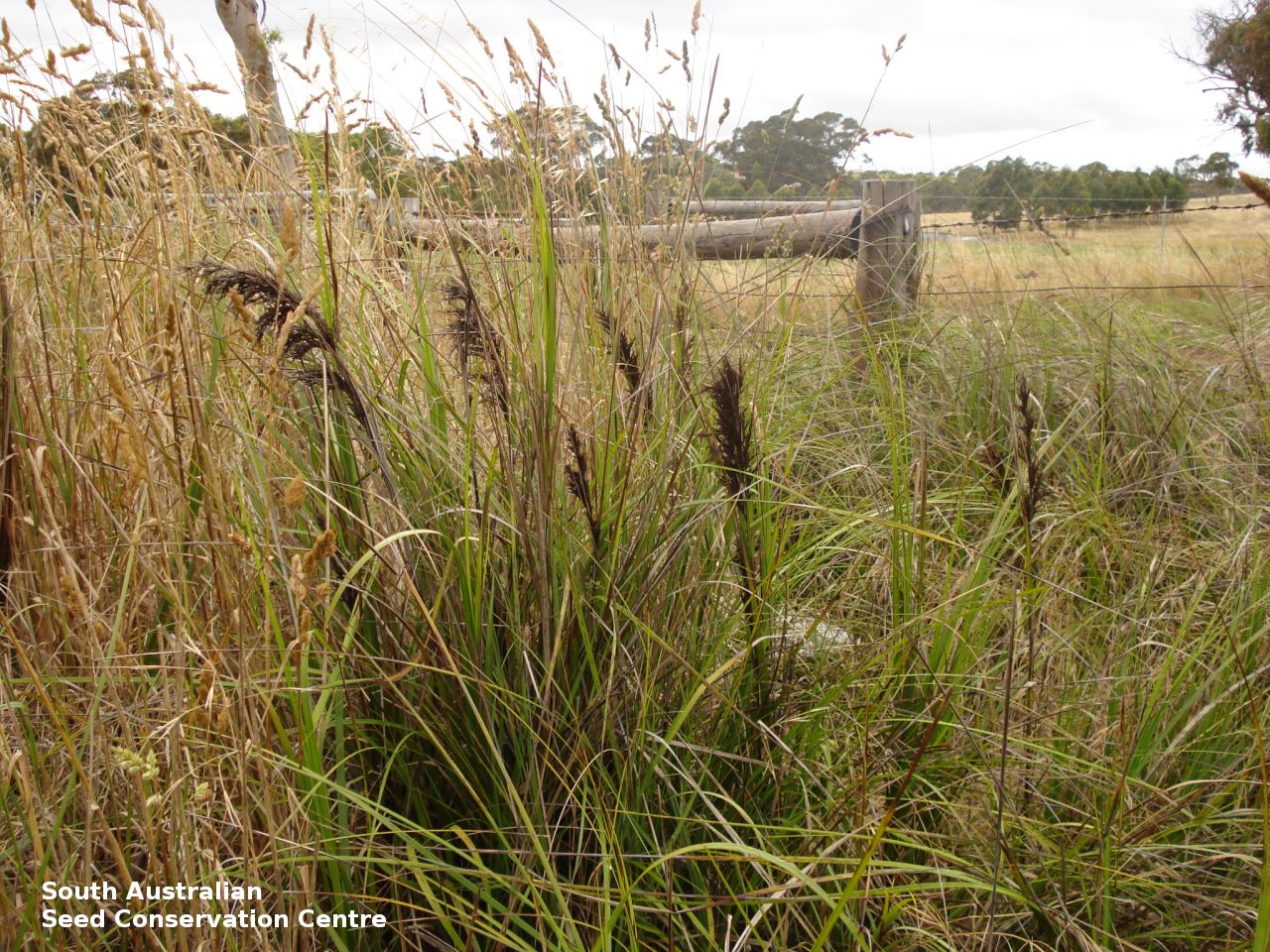
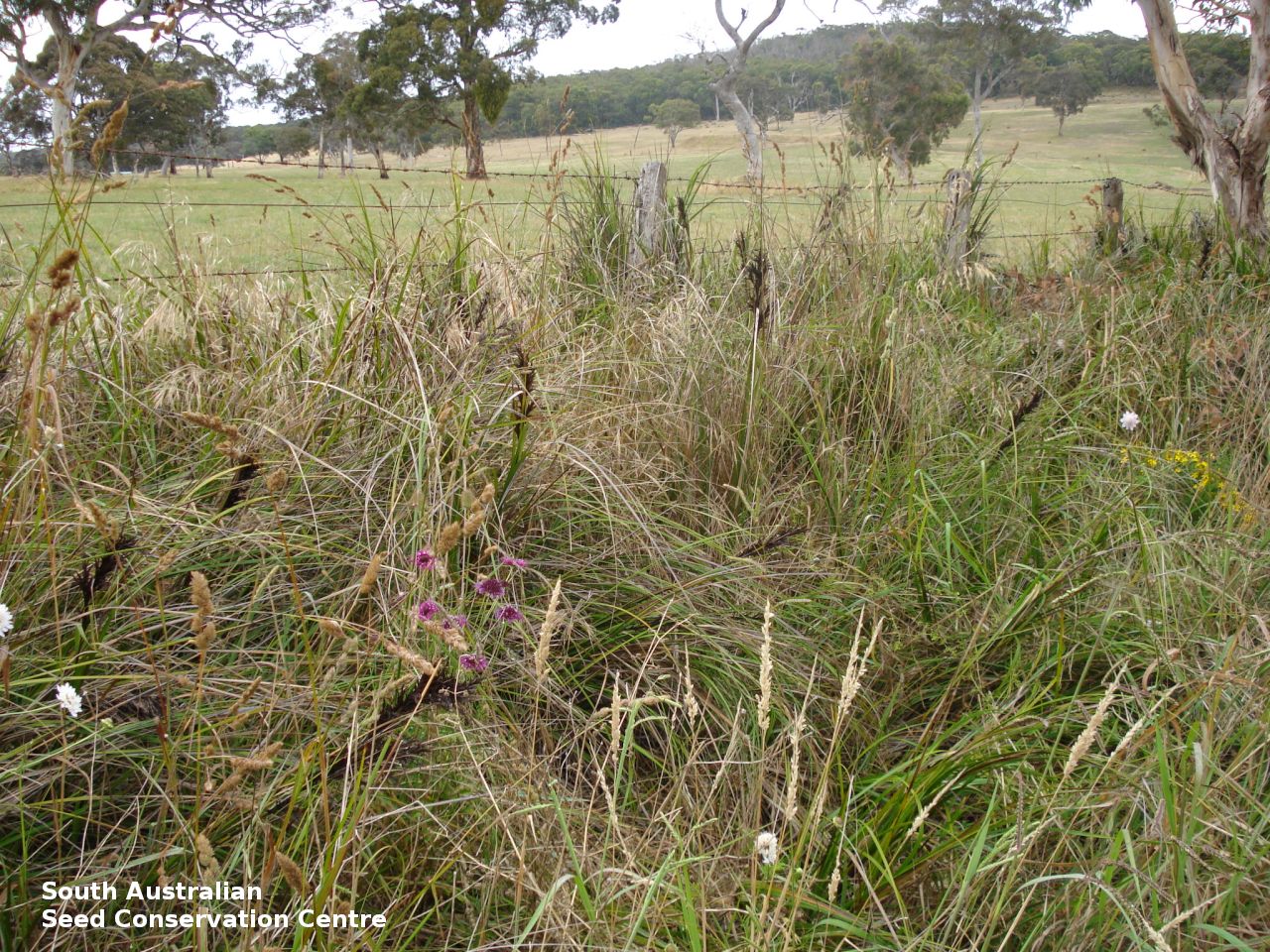
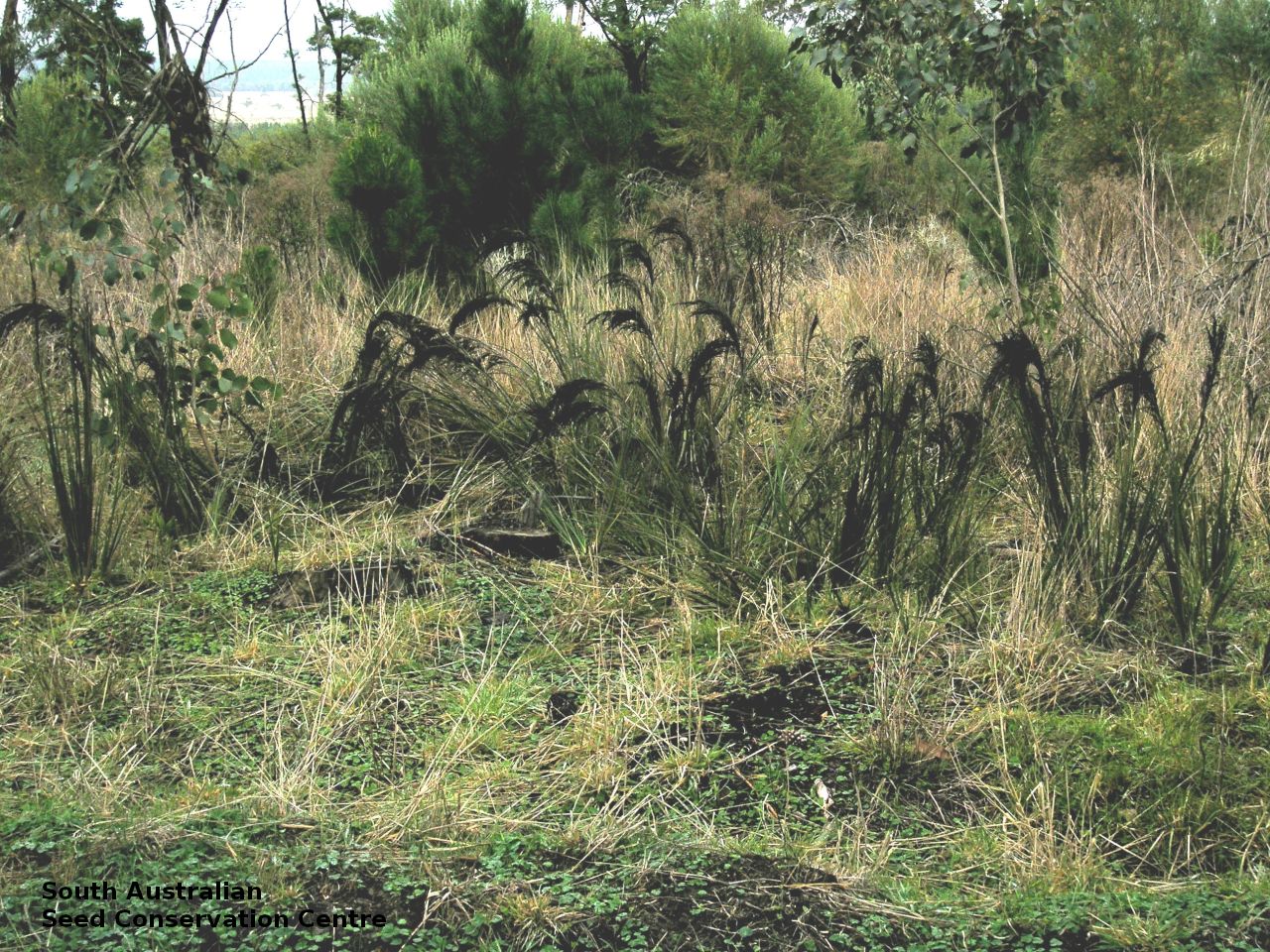
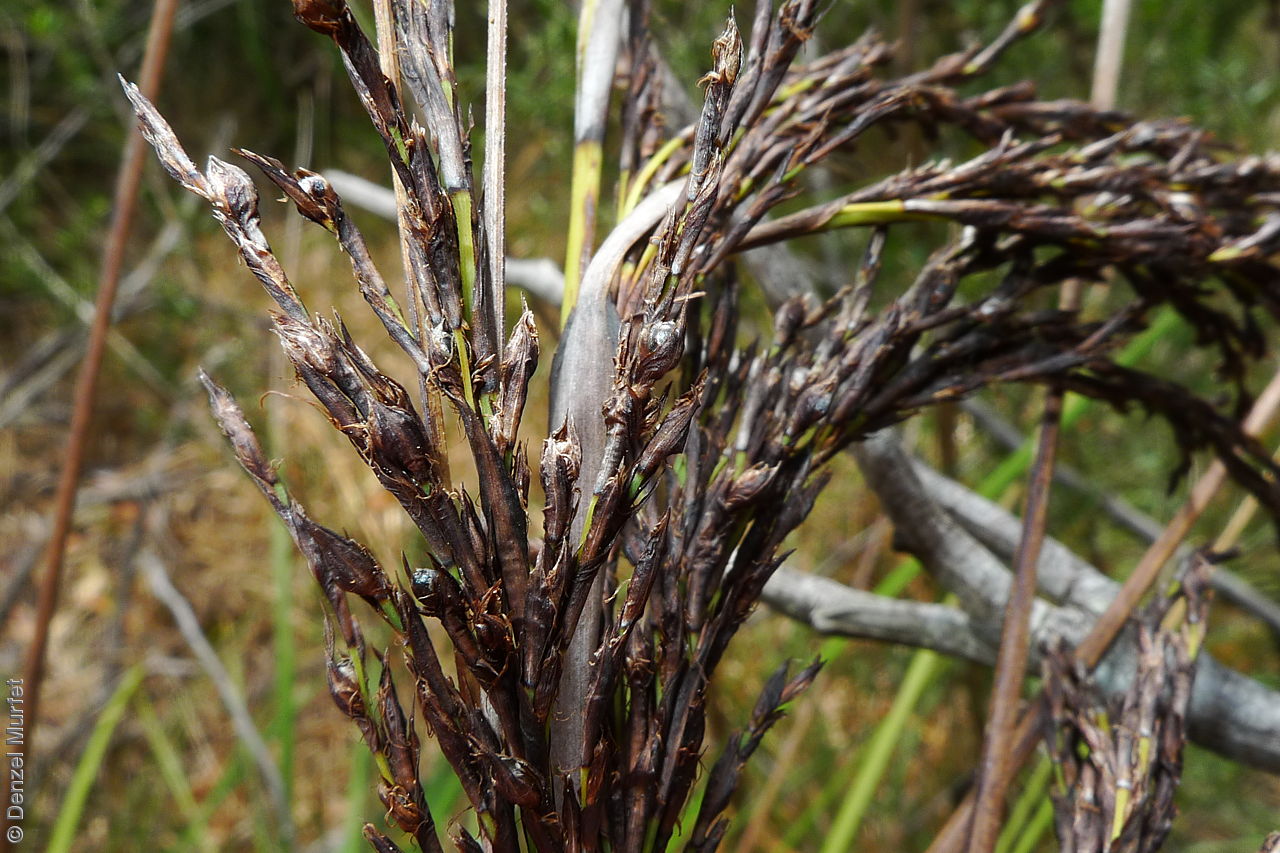
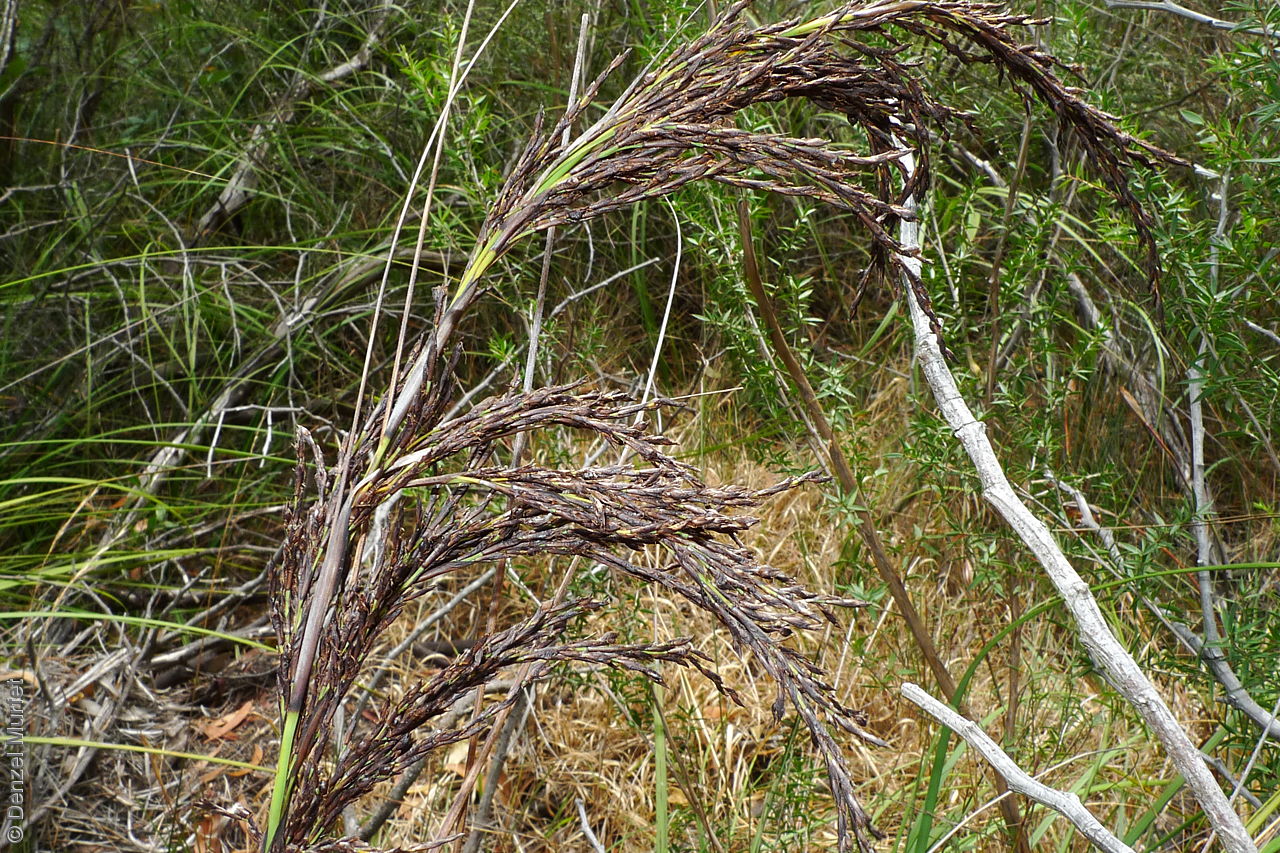
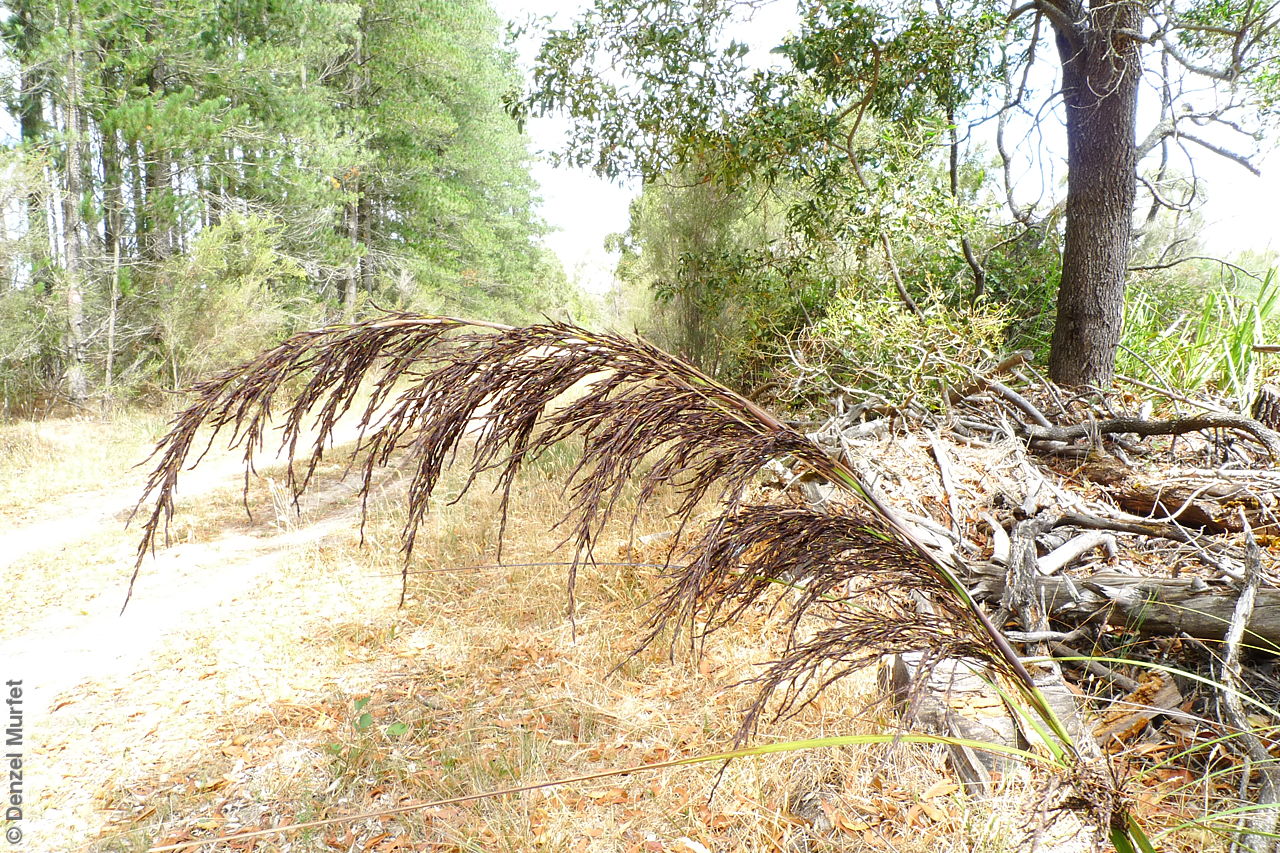
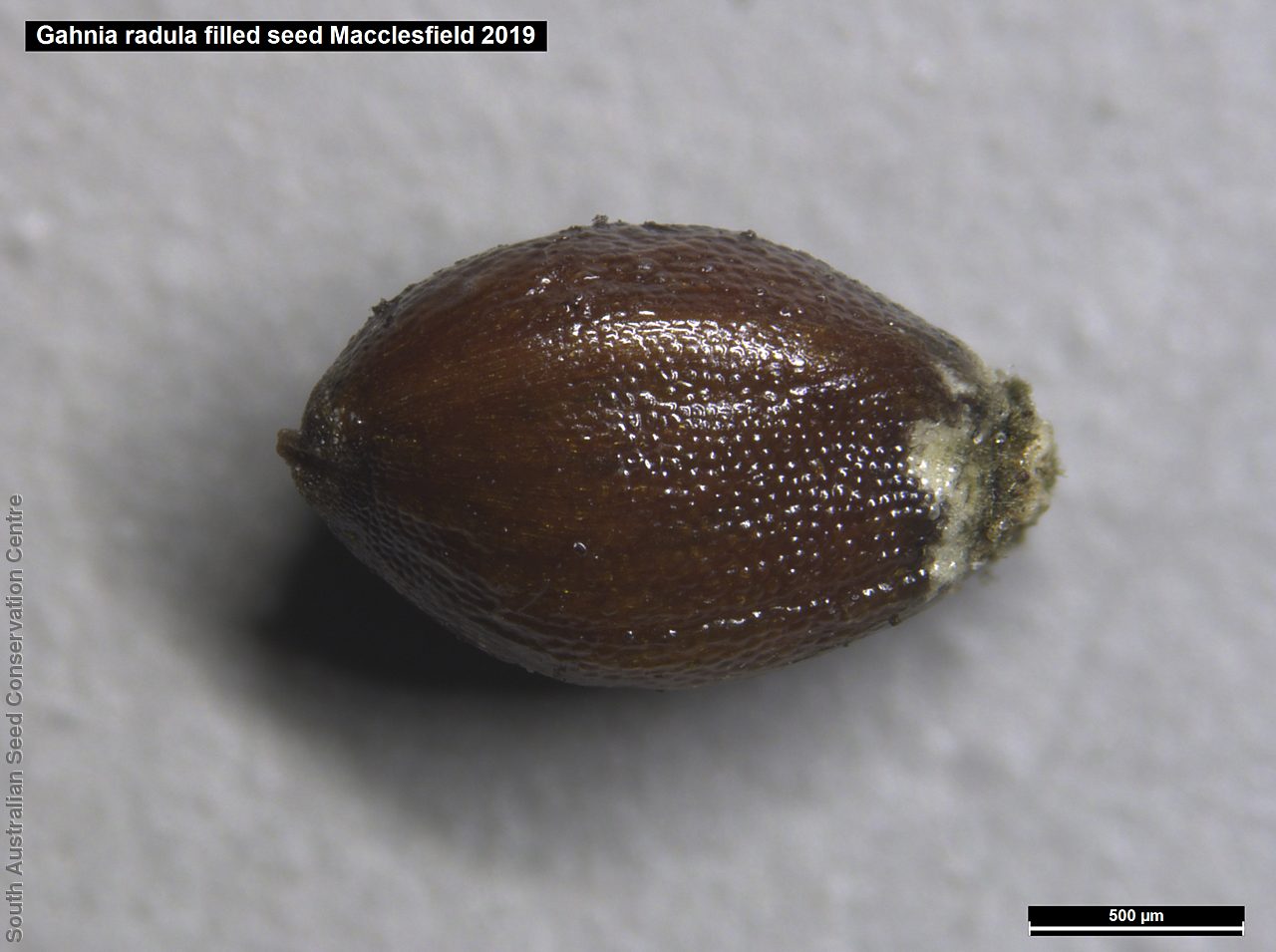
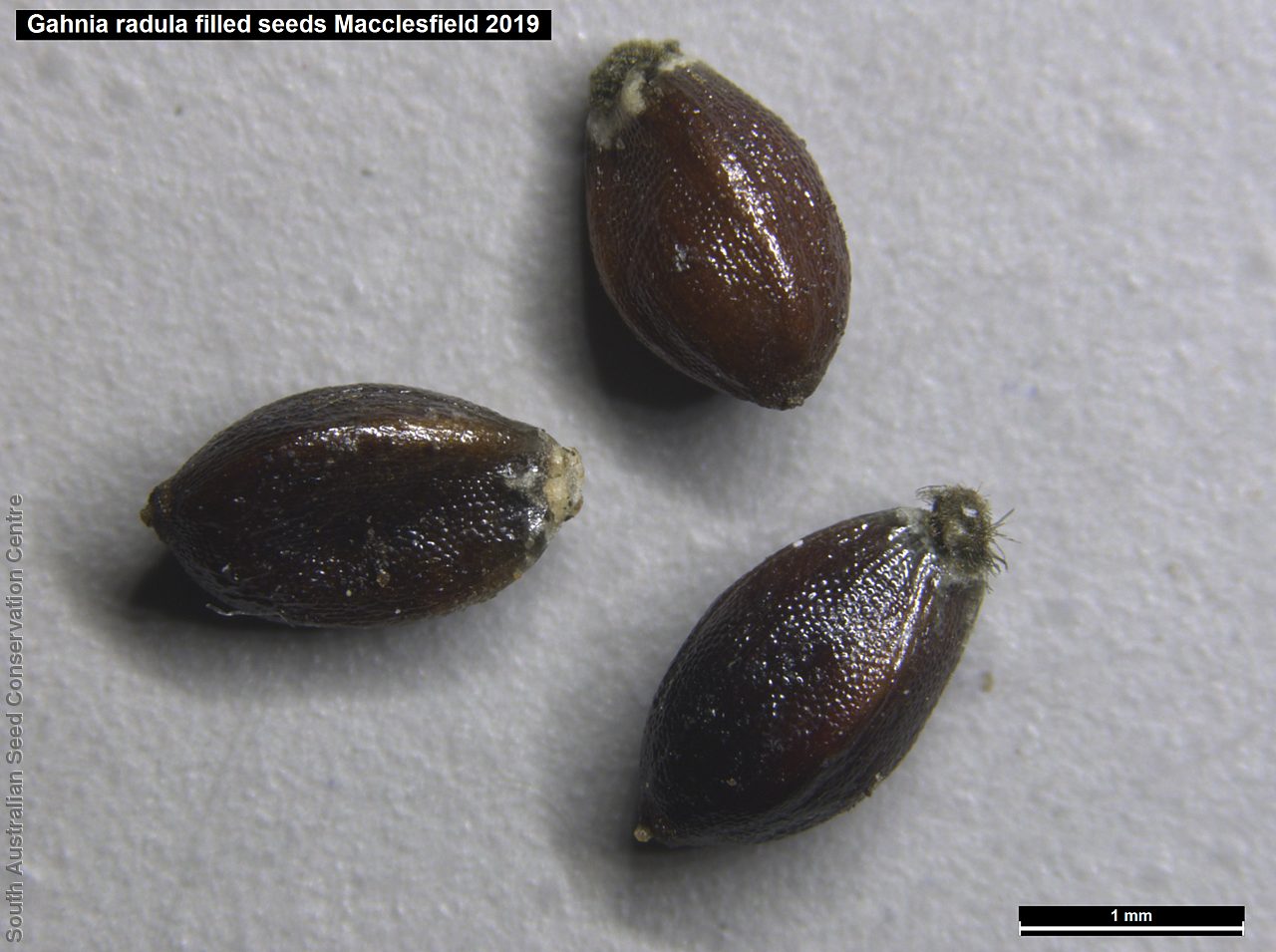

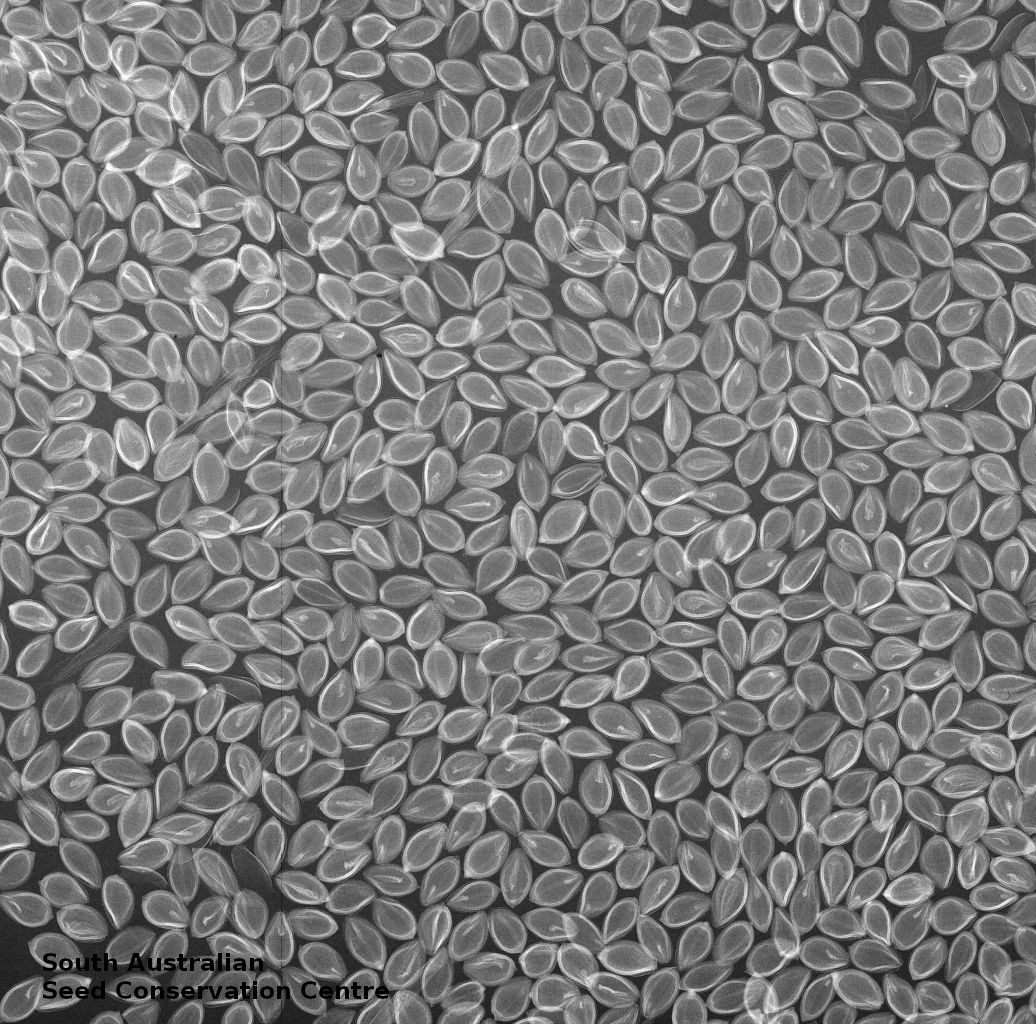
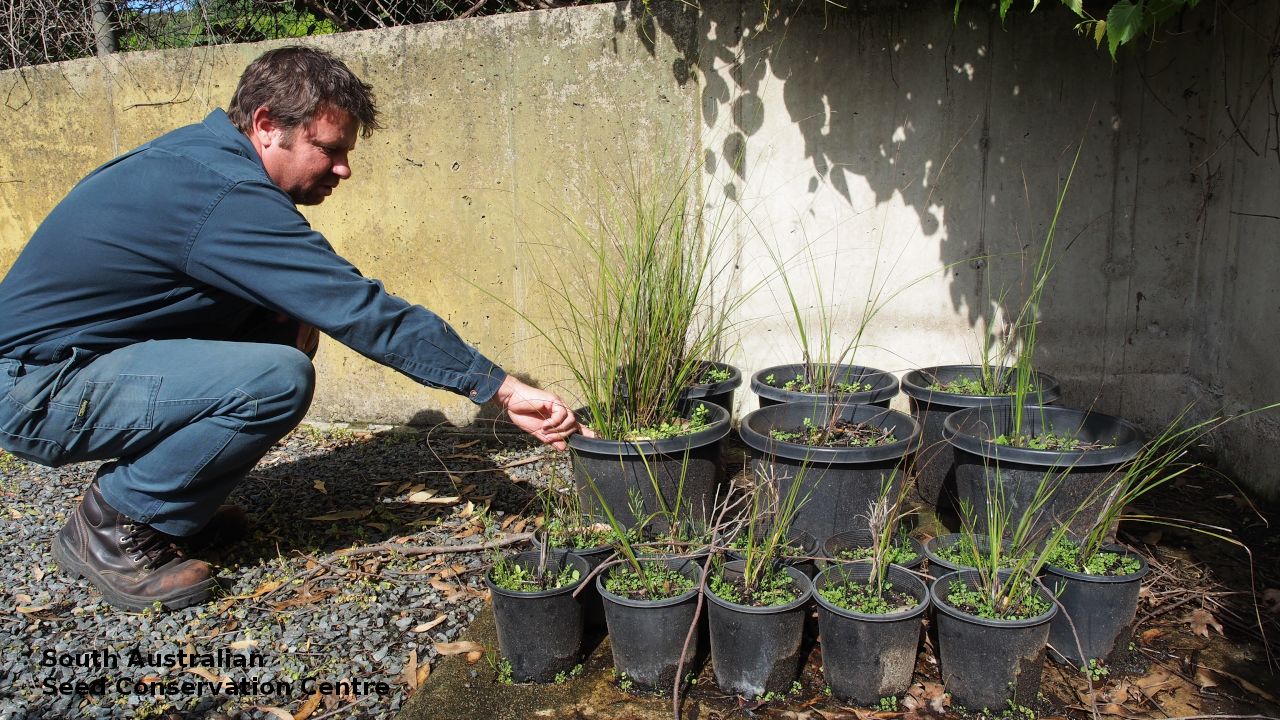

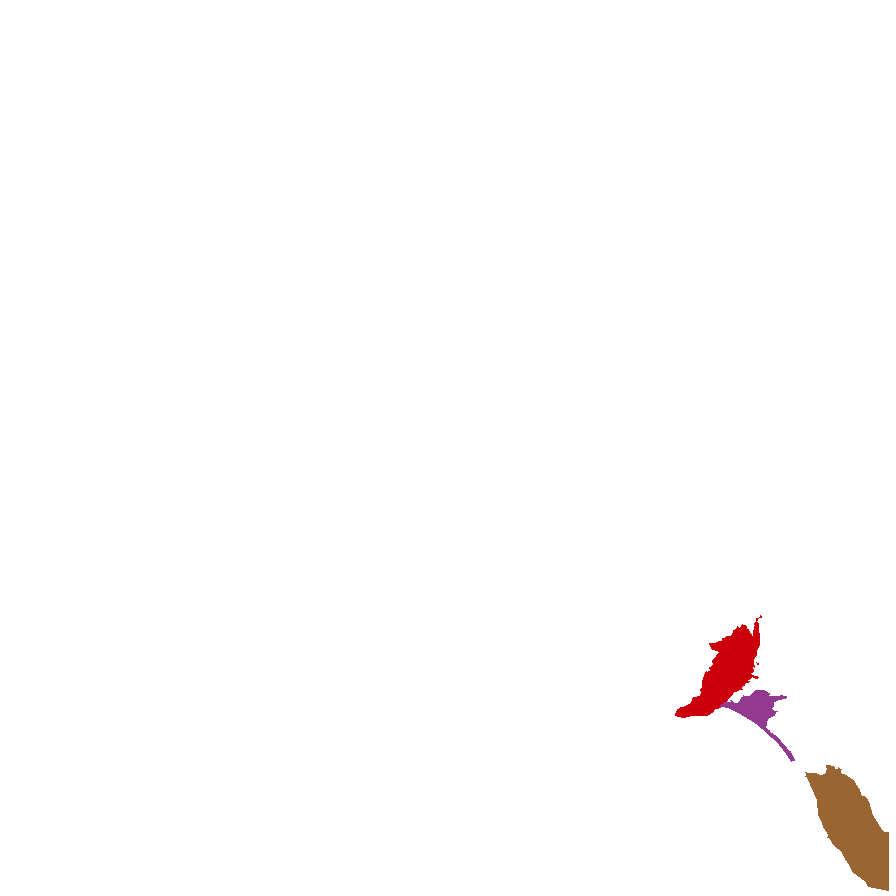
Botanical art
Prior names
Cladium radula
Etymology
Gahnia named after Dr. Henricus Gahn, 19th century Swedish botanist and student of Linnaeus. Radula from the Latin 'radere' meaning to scrape, referring to the scabrous leaves with sharp edges.
Distribution and status
Found in the southern Mount Lofty Ranges and the lower South-east in South Australia growing in seasonally wet or poorly drained silty soils in woodland or forest-clearings. Also found in New South Wales, Victoria and Tasmania. Native. Rare in South Australia. Common in the other States.
Herbarium regions: Southern Lofty, South Eastern
NRM regions: Adelaide and Mount Lofty Ranges, South East
AVH map: SA distribution map (external link)
Plant description
Narrowly tufted, rhizomatous perennial sedge with culms to 100 cm high and 5 mm diameter. Leaf-blades flat, erect, scabrous, with sharp edges; longer than inflorescence. Inflorescence narrow, erect to ascending, to 70 cm long, dark brown to black. Flowers in spring and summer. Fruits are dark brown to black narrow spike. Seed embryo type is capitate.
Seed collection and propagation
Collect seeds between November and March. Collect heads that are dying off, turning dark brown and containing hard dark seeds. However, it is very difficult to collect viable seeds in South Australia. Place the heads in a tray and leave to dry for one to two weeks. Then rub the heads with a rubber bung to dislodge the seeds. Use a sieve to separate any unwanted material. Store the seeds with a desiccant such as dried silica beads or dry rice, in an air tight container in a cool and dry place. Most seeds are non-viable.